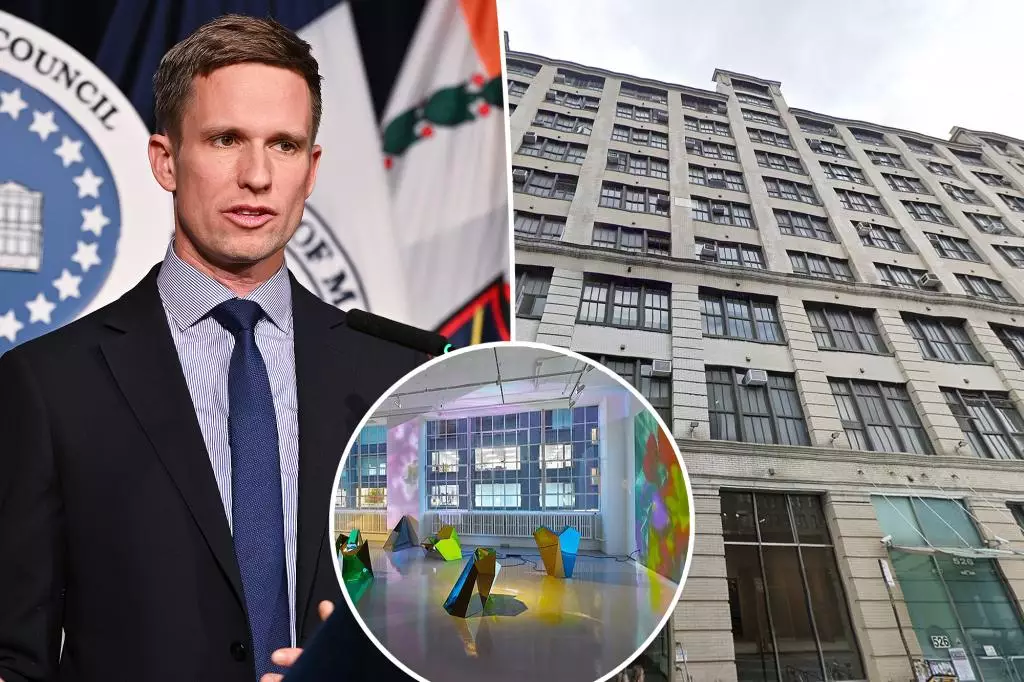The West Chelsea Arts Building, a cornerstone of New York’s vibrant art scene, is facing an uncertain future as it is up for sale for $170 million. Opened in 1993 by philanthropist Gloria Naftali and her late husband Raymond, this expansive 400,000-square-foot building has played host to a plethora of renowned artists, including the likes of Ross Bleckner and Louise Fishman. This pivotal space has not only provided affordable studio space for artists but has also enriched the cultural fabric of the Chelsea neighborhood. Following Gloria Naftali’s passing in September 2022, her estate has made the difficult decision to sell the property, eliciting widespread concern among both tenants and local leaders about the potential upheaval that might follow.
Local residents and artists are rightfully alarmed at the prospect of new ownership. The fear is palpable that the sale will lead to skyrocketing rents or, worse yet, the elimination of cherished art spaces that have nurtured creativity for decades. In a heartfelt letter, notable figures including City Council member Erik Bottcher, US Representative Jerry Nadler, and State Senator Brad Hoylman-Sigal urged the Raymond and Gloria Naftali Foundation to reconsider their decision. They emphasized the building’s significance as a cultural hub, vital for the livelihoods of approximately 200 tenants who consider the space more than just a studio—it’s a home.
“We are genuinely concerned that this potential sale poses a serious threat to the community,” Bottcher stated. “The tenants have established deep roots and invaluable connections within this artistic enclave.” The fears surrounding this sale seem less about the transitory nature of real estate and more about sustaining a community that has been meticulously cultivated over the years.
According to reports, Gloria Naftali envisioned the West Chelsea Arts Building as a sanctuary for artists and galleries, as reflected in her will. While she expressed a desire for the building to maintain its artistic character, her lack of legal stipulation leaves room for interpretation. The challenge then arises: how can art communities safeguard spaces that are at the heart of their creativity against profit-driven motives?
As the potential buyer’s intentions remain uncertain, the community is left facing complexities that intertwine philanthropy, art, and commerce. The wishes of legacy don’t always manifest in practice, and here lies the precarious balance between artistic heritage and economic realities.
Reactions from Local Officials
City representatives are not taking these developments lightly. Bottcher conveys that this situation is more than just a real estate transaction; it could symbolize a larger narrative about New York City’s evolving art scene amidst an affordability crisis. “New York has been an artist’s haven for 400 years,” he said, warning that rising costs threaten this long-standing status. The pressure on artists, particularly as it relates to securing affordable spaces, is at an all-time high, leading to potential displacement that many fear could derail the artistic legacy of neighborhoods like Chelsea.
In light of these challenges, Bottcher and other officials are requesting meetings with the Naftali Foundation to discuss potential pathways to safeguard this essential resource. Their advocacy aims to ensure that tenant voices are heard in discussions about the building’s future—whether that means shifting the economic model or conserving its intended purpose as an artist hub.
A Future of Uncertainty
Despite these efforts, uncertainty looms over the future of the West Chelsea Arts Building. Derek Wolman, an attorney representing Naftali’s estate, has noted that financial constraints on the foundation compel the sale, with proceeds earmarked for philanthropic causes. He reassured tenants, stating, “This is a major piece of real estate; it’s not going to sell in one day.” However, the reassurance only partially alleviates the underlying fears of displacement.
As the art world watches closely, the fate of the West Chelsea Arts Building serves as a microcosm of broader issues concerning artistic spaces in urban environments. Economic realities consistently challenge the preservation and enhancement of these cultural treasures. The dialogue initiated by community leaders, artists, and residents serves as a reminder of the essential role such spaces play in fostering creativity and maintaining the vibrant cultural tapestry of cities like New York.
The battle to preserve the West Chelsea Arts Building embodies the struggle to protect cultural legacies in the face of modernization and profit. Whether local leaders can safeguard this vital resource remains to be seen, but their efforts highlight the collective will to advocate for the arts in a city that has long been a sanctuary for artistic minds.

